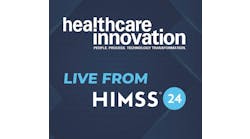Cities and states with strong public health data infrastructure have fared better during the pandemic, but even they discovered troubling gaps that still need filling, said Angela Dunn, M.D., M.P.H., executive director and health officer of the Salt Lake County Health Department.
Speaking during the recent CDC-ONC Industry Day event, Dunn outlined some strengths and weaknesses her Salt Lake County department experienced. She has been with Salt Lake County for a year and a half. Previously, she served as the state epidemiologist for the Utah State Health Department.
Public health in Utah really had some good bones in place before the pandemic, Dunn said, so she describes it as a high-capacity state. “This is not the norm across the nation. We are an exception,” she said. “The infrastructure we had in place before the pandemic allowed us to basically just need to increase server space during the pandemic. We had EpiTrax, which was our homegrown national notifiable disease surveillance system. I know homegrown probably makes some people cringe, but this has been in place for a while, and the fact that we had it in house meant that it was flexible, and we could respond to the needs of our investigators and epidemiologists rapidly.”
EpiTrax is a statewide system so their 13 local health departments are all on the same system. They could get statewide data very quickly and were also able to add forms quickly so that everybody across the state was collecting data in a standardized way — everything from race and ethnicity to SOGI (sexual orientation and gender identity). “We added a button that said this person needs community health worker support,” Dunn added, “and that button went directly to our newly hired community health workers, who followed up with the individual and provided rent support, meal delivery, etc.”
Utah also had electronic laboratory reporting and labs reporting electronically through the laboratory information management system to public health.
“Electronic case reporting is really an exciting way of the future for public health,” Dunn said. Before the pandemic, Utah was one of the first states to do electronic case reporting. It partnered with Intermountain Healthcare and did salmonella, chlamydia, pertussis and a handful of use cases to get the data from the electronic health records directly to public health. “This is very important in terms of our ability to respond because it provides way more detail than a lab report,” Dunn said. “You get all your demographic data, your treatment data, whether or not they were hospitalized, where they were seen. It just gives us a much more robust picture of what's going on in the community. We were able to bring in the University of Utah Health as well for COVID. We had Intermountain Healthcare and the University of Utah already set up with ECR for COVID, and that accounted for 70 to 80 percent of all of our healthcare visits in the State of Utah, so we were well ahead of the curve.”
Dunn also described an electronic messaging staging area (EMSA). “I will say this is one of the best things we have in Utah. All of our electronic messages come through EMSA and they are cleaned and de-duplicated automatically. It looks for abnormalities, so if there's a male that's pregnant, etc., it cleans all of that data, allowing our investigators and our epidemiologists to use the data much more quickly and not spend their time cleaning it before it's used.”
She described syndromic surveillance as another huge key in public health. “What was unique about Utah is that nearly all of our emergency rooms and urgent care centers were already on board, providing us syndromic surveillance ahead of the COVID pandemic,” Dunn said. “We were able to implement it as an early warning sign for all of our surges pretty early on.”
But then Dunn went on to speak about a few of the gaps they identified. At the local level, the departments all have their own electronic medical records. “We have 13 health districts, and I think seven different electronic medical health records, and they had varying capabilities of handling a surge during a pandemic — from accepting appointments to getting data in — and routinely they crashed during COVID,” she recalled.
“The capacity of our EMRs to link with our immunization system was surprisingly very, very troubling,” she noted. One rural health department, for example, was giving mass vaccination clinics in one building. They had a school building where they did their clinics, and it was across the street from their health department building. A statute required that they had to get all of their vaccine Information in by the next day. They finished their clinic at 10 p.m. All of their records were entered by hand and then they had to go to the health department across the street to import them into their electronic medical record system because they could not access their EMR outside of their health department’s physical location. “That's insane,” Dunn said, “but that still happens even today.”
Another problem was trying to inventory of all of their PPE and ventilators. “At the beginning of the pandemic, I could not get a good count of how many ventilators we had in our state,” Dunn added. “I know that probably seems like decades ago when we cared about ventilators, but it was a big, big deal at the beginning of the pandemic. I didn't know how much PPE we had. We also didn't know our hospital capacities in real time. There was this whole issue of whether or not a bed was truly the capacity of a hospital vs. a staffed bed. That metric alone in the State of Utah determined our intervention. When hospitals were at capacity or 80 percent capacity, we implemented different restrictions. It was a really important data metric to have that we frankly didn't have and we had to get hand-entered daily from all these healthcare systems who are already under so much pressure.”
Still another thing that public health struggles with is operations, Dunn added. “We're very good at understanding what's going on in a community, but we're very bad at understanding our own efficiencies,” she said. “Operation metrics was a huge thing we needed in the pandemic, which we probably still need today as well. Things like turnaround time for a lab result. How long does it take for somebody to be contact-traced? Those kinds of performance metrics are not something that are routinely collected in public health and something we needed during the pandemic.”
Even in her high-capacity health department, they are still printing out electronic health records and then scanning them back into the surveillance system because they can't save the electronic health record from the hospital.
Dunn can point to improvements they have made in Salt Lake County, but she knows that there are other health departments who don’t have similar tools. “I have one epidemiologist who runs our COVID dashboard, and it takes her 10 to 15 minutes every week to update it. I have a colleague in another county outside of Utah, who has five to six FTEs who are cleaning data on 800 COVID cases every single week,” she said. “They can't even build a dashboard. The difference between the two is just so striking, and it adds to the complexity for my CDC colleagues to try to figure out how to make this work for all of us.”
Ultimately, she said, public health agencies need flexible systems built with public health in mind. “A lot of technology that has come out is very healthcare system-focused. We need to figure out how to translate that to public health. What we do is different. How we define our populations is very different. I don't worry about my catchment area or my set of patients who have diabetes as population health. I need to be able to define my population by geography, by race/ethnicity, by SOGI, by chronic disease condition or comorbidity. I need that flexibility to define a population in a way that suits whatever pandemic or crisis is going on in the moment.”
She said there is also a need to be able to translate data standards for public health. “We've talked about FHIR and TEFCA, but how do we get that into the hands of public health when I guarantee you the vast majority of the local health department workforce has no idea what FHIR and TEFCA are, right? How do we help the public health workforce come up to speed?”


